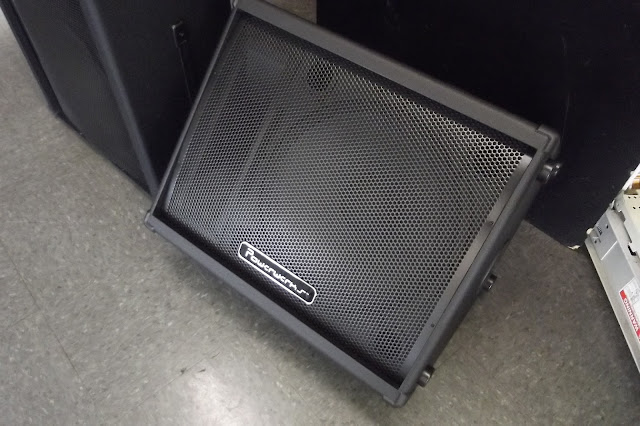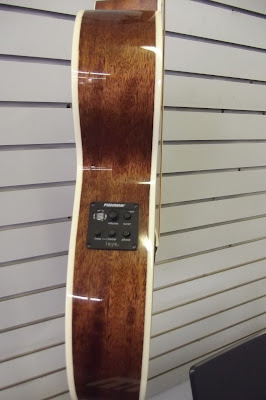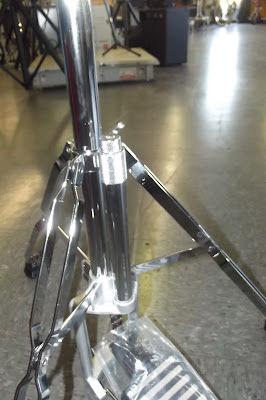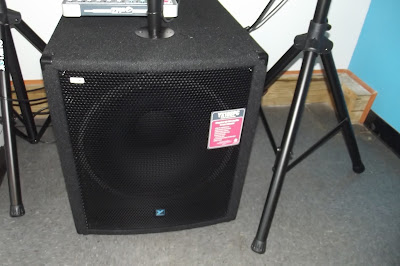THE GUITARISTS GUIDE TO COPYRIGHTS – UNDERSTANDING YOUR RIGHTS AND OBLIGATIONS
There is an old trick when it comes to copyrights – mail yourself a copy of the song and don’t open it. That method won’t do any harm, but it probably won’t do any good either – except you will have (in my case) a cassette tape to remind you, if you can ever find something to play it on, how bad your first song really was.
Trust me, mine was bad!
The idea of this ‘poor man's’ copyright method comes from being able to prove the date that the song was created. Of course, nowadays posting your song to YouTube or any other online media will also fix the date (as well as many other methods available to us).
 |
| Whether it is a song or a written work, much or copyright law works the same! |
HOW COPYRIGHTS WORK – SINGLE SONGS AND COLLECTIONS
The first copyright laws were put in place in the US in 1790 – the constitution itself gave congress the specific power of enacting copyright laws to protect many different types of speech, art, intellectual property and more. Of course, here we are concerned about music!
Copyright laws are very simple, but protecting yourself and your works is part of being in the business of music. The more you understand how these processes work, the better you will be able to navigate through the business side of the music industry, and the more of your money you will be able to keep in the long run!
A copyright lasts until 70 years after the death of the writer (in the case of multiple writers, it lasts until 70 years after the death of the longest living copyright holder), and a song is copyrighted as soon as it is affixed to any tangible medium.
This could be something as complex as an entire score, or as simple as a chord chart and a set of lyrics – or in some cases, a CD or digital download. What this means that as soon as you write down your song, or record it to any medium, it is copyrighted. The process of registering your copyrighted work simply affirms the copyright on a certain date, and is the best way to collect what may be owed to you if someone ever uses your work.
PUBLISHED V. UNPUBLISHED
First off, registering a copyright for your song or music collection is very easy – you can do it online at http://copyright.gov/ - click the ‘Register A Copyright’ button and it will guide you through the process of setting up an account and sending the necessary documentation/audio files to copyright your song. You can also perform this step by mail – the same Web address above will give you specific instructions for physical filing.
Many people want to copyright a song as soon as they get done writing it, or copyright a collection of songs as they are written, but it is also a wide practice to wait to register the copyright until you actually publish the song. The reason for this is that in the past, if you did not press the song to record, tape or CD not enough people would be exposed to the song to worry about copyright infringement. A song can be dispersed widely using modern technology without be ‘Published’, so it is becoming more important to take preemptive steps when it comes to your rights as a songwriter.
That is why even if you don’t publish the song according to the rules of the copyright office, you may still want the protection and the certification that copyrighting a work brings, especially if you are posting the song on any electronic platforms.
When you copyright, you will list the song as either ‘Published’ or ‘Unpublished’. Once a song has been published, anyone can make their own version of that song, but they must pay you a set royalty fee. Your music cannot, however, be used for any video performance, including commercials, TV shows, movies or unofficial YouTube videos without your express consent – more on this in the next section!
Copyrighting your songs online is the quickest and easiest way of copyrighting them, and the least expensive – just $35.00 for a single song, or $65.00 for a collection. The collection can be as many songs as you wish it to be.
If you are using the score or chart method, sending the document as a PDF is the normal way to transmit those documents. Many people file the song in both written and recorded form.
To register your songs as a collection, they must be contained in a single ‘Collection’ under one name, and the copyright holder must be the same for each song. For instance, if you had ten songs, and one of them shared co-writing credits with you you would only be able to register the nine songs in your name. The single song with your co-writer’s name included would have to be registered individually.
WHAT ARE YOUR RIGHTS AND OBLIGATIONS – MECHANICAL RIGHTS AND SYNCHRONIZATION RIGHTS
Once a song has been published, anyone can cover it under the mechanical copyright laws, but they must pay you money. As well, if you copy someone else’s work you must pay them the current fees set by law for a mechanical license. They are at the moment 9.1 cents per unit (copy) sold, whether it is a physical CD or a download (or any other medium). For songs over 5 minutes there is an additional per minute charge of $1.75.
The Harry Fox agency is one of the largest agencies to use to either pay copyright fees you may owe to the copyright holder of a cover tune, or to make sure your song is registered and thus protected. Registering your song with the Harry Fox Agency or a different listing agency will guarantee you maximum payout if someone uses your material.
When you apply for a copyright, your song is not automatically registered, but the completed copyright paperwork does give you the power to list your song with the Harry Fox Agency, among other publishers, listing agents and others.
YOUTUBE AND SYNCHRONIZATION RIGHTS
This is one of the most asked questions most musicians have when it comes to copyrights – can I post my cover of that tune on YouTube? The answer is – sometimes you can, and sometimes you can’t. This depends on a couple of different factors. Remember, as we stated above, to use a person’s song in any video format, you must gain the copyright holder’s express permission and negotiate the fees that will be paid.
Any performance of a song on YouTube, even if the screen remains black throughout the performance, is synchronized to the video, and therefor does NOT fall under the normal mechanical copyright laws that allow any band to perform their own cover version of any published song.
Several factors come into play, and several things could happen. The copyright holder could demand that the video/song be removed entirely, or that the audio containing the song be removed. This holds true whether the song is being performed directly, or whether it is playing in the background of the video.
The copyright holder can also choose to monetize it through YouTube, and thus gain a percentage of the ads that are being sold around your video.
To find out if a publisher has a deal with YouTube to grant synchronization rights through YouTube, search ASCAP and BMI to see who holds the publishing rights. If they have a deal with YouTube, you can probably post your cover tunes without many worries (the revenues will be collected from the ad revenue on the video). If they do not, it would be best if you contact the publisher of the copyrighted work you want to cover and gain the rights to make a video performance of the work.
Remember, though, without express permission, even if the copyright holder and publisher have a deal with YouTube they can demand that your specific video be taken down or that the music portion be muted.
And of course, you have exactly the same rights as a songwriter when it comes to your own songs!
LIVE PERFORMANCES AND REPLAYING OF ORIGINAL MATERIAL
If you are a band, you may have run into this already – publishers and copyright holders can and do expect to be paid when you perform their song live. The rates for this type of performance are preset, and are usually part of a bulk payment made to a publisher that allows you to play any song in their library – once again, the largest publishers are BMI and ASCAP but there are more services and registration agencies available now.
Some venues and bars will have these rights covered as part of their business, but it is always up to the band to find out whether they need to pay royalties for any cover songs they perform.
Playing the original song over any medium (other than private consumer use) is also handled on a preset basis. Mostly, this means bars with Karaoke or pre-recorded music such as jukeboxes, radio stations, disk jockeys, DJ’s and more.
Buying the disk gives you the right to play the music in a private setting – if you are playing an artist’s own songs, contact BMI and ASCAP about bulk packages that will keep you covered regarding royalties owed to the publisher. Bands can do the same thing for cover tunes as well!
It is still illegal to use a song, whether it is an original recording or a cover done by another band, in any synchronized way – video, movie, TV show or other – without the express permission of the artist. The only exception to this are the Fair Use rules, which allow, for instance, news people or critics to use samples of the song in their coverage of that song.
COPYRIGHTS ARE AUTOMATIC – PROTECTING YOUR WORK ISN’T
While copyrights are granted automatically as soon as you set your song or music down on any medium, protecting that song is not automatic. That is why registering your song’s copyright, and then listing your song with the Harry Fox Agency can be important.
These simple steps make it easy to claim your rights as a songwriter/composer if someone should decide to cover your song, or play your song on the radio. If it is not registered, even if they hear the song or see it on YouTube they will not be able to find the information in order to make payments to you. So get out there and start writing more songs, and look deeper into the copyright laws to make a truly informed decision on whether you need to register your copyright!
















































